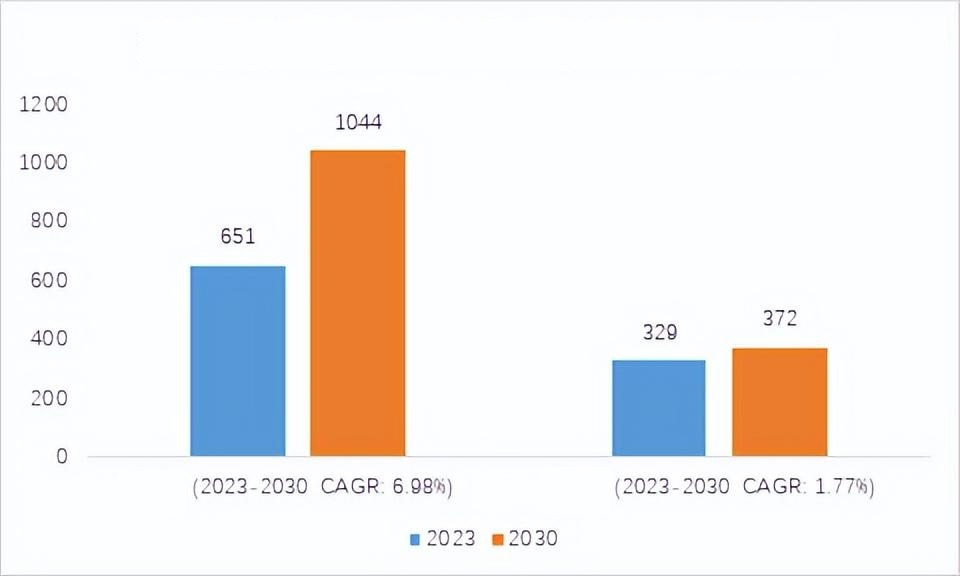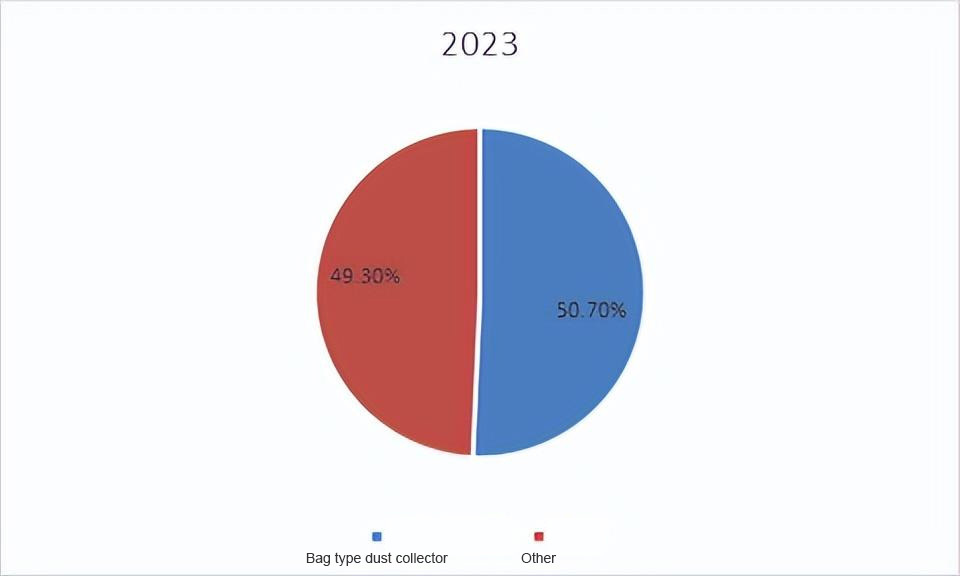Wuhan SY Blue Sky Environmental Technology Engineering Co., Ltd.
Market segment depth research: In 2023, the global dust collector market sales will reach 8.55 billion US dollars
Release time:2024-08-13
A dust collector is an industrial device used to separate and capture dust, particulate or solid particles from a gas stream, thereby purifying the gas stream. It usually includes an air intake, a filtration system, a dust collection chamber and an outlet.
A dust collector is an industrial device used to separate and capture dust, particulate or solid particles from a gas stream, thereby purifying the gas stream. It usually includes an air intake, a filtration system, a dust collection chamber and an outlet. When the gas flows through the dust collector, the dust particles are subjected to different physical and chemical processes, such as screening, inertial separation, electrostatic adsorption, etc., to separate the particles from the air stream and collect them inside the dust collector or discharge them into a dust collection container. Dust collectors are widely used in industrial production processes to maintain air quality, protect equipment, prevent dust pollution and improve the safety of the working environment. Different types of dust collector include bag dust collector, cyclone dust collector, electric dust collector, etc. Choosing the appropriate type of dust collector depends on the specific application and dust characteristics.
In-depth analysis of dust collector market driving factors
Factors such as environmental regulations, industrial production growth, health and safety concerns, energy conservation sustainability, technological innovation, and emerging market demand are contributing to the growth of the dust collector market. With the increasing awareness of environmental protection and sustainable development, the dust collector market is expected to continue to expand and play an important role in future development. The driving factors of the dust collector market include but are not limited to the following:
Environmental regulations and standards: Increasingly stringent government requirements for air and environmental quality have driven industrial enterprises to adopt dust collectors to reduce emissions in order to meet regulatory and standard requirements. The mandatory requirements of such regulations are driving the growth of the dust collector market.
Industrial production growth: The development of the industrial sector and the increase in production activities have led to more dust and particulate matter emissions. The growth of manufacturing, mining, construction and other sectors requires more dust removal equipment to control and reduce particulate matter emissions.
Health and safety considerations: The use of dust collectors helps to improve the working environment and reduce the risk of workers being exposed to harmful dust, thereby improving health and safety in the workplace. These aspects are also very important in attracting and retaining qualified employees.
Energy saving and sustainability: Modern dust collector technology not only helps reduce emissions, but also improves energy efficiency. Reducing energy consumption is an effective way for companies to reduce costs, therefore, sustainability and energy conservation considerations are also driving factors for market growth.
Technological innovation: Continuous research and development and technological innovation make the performance of the dust collector more efficient and lower maintenance costs, thus attracting more users to adopt advanced dust removal equipment.
Emerging Market demand: Industrialization and urbanization in emerging markets have accelerated the growth of the dust collector market. Dust and pollution problems need to be addressed in these areas, so the demand for dust collectors is relatively high.
Detailed study on the future technical development trend of dust collector
As science and engineering continue to advance, dust collector technology is expected to continue to evolve to more efficiently clean the air, reduce energy consumption, improve operational efficiency, and reduce maintenance costs, while better protecting the environment and human health. Future trends in dust collector technology include the following key aspects:
Intelligent and automated: Future dust collector systems will be more intelligent and automated. This will include the use of sensors and data analytics to monitor dust levels and automatically adjust operating parameters as needed to improve efficiency and reduce energy consumption. The intelligence will also provide for remote monitoring and maintenance, reducing downtime.
Efficient energy use: Future dust collectors will focus more on energy efficiency. New materials and designs will reduce energy consumption, such as more efficient fans and filter media, to reduce operating costs.
Efficient dust collection: Advances in technology will lead to more efficient dust collection. Improved filter media and collector design will reduce dust emissions and increase capture rates.
Low maintenance costs: Future dust collectors will be more durable and easier to maintain. This will include longer-life components and intelligent maintenance systems that can detect failures ahead of time and reduce maintenance costs.
Versatility: The dust collector may become a multi-functional device that, in addition to dust control, can also deal with other pollutants such as odors, harmful gases and microorganisms. This will improve the combined performance of industrial and environmental applications.
Renewable energy: The use of renewable energy to drive dust removal equipment will be an important trend. Clean energy sources such as solar and wind will be used to reduce dependence on traditional energy sources.
Modular design: The modular design will make the dust collector easier to customize and upgrade. Users can add or remove modules according to actual needs, so as to adapt to different applications and working conditions.
Green technology: Environmental protection and sustainability will be the main driving factors for future dust collector technology. More green materials and manufacturing processes will be used to reduce the adverse impact on the environment.
Detailed analysis of market limiting factors of dust collector
Although the dust collector market has significant growth potential, it is also constrained by a series of limiting factors. However, with the continuous development of technology and increased environmental awareness, the dust collector industry is still expected to continue to improve and evolve to meet the needs of regulations, reduce pollution and improve the working environment. The growth of the dust collector market is affected by a number of limiting factors, which include but are not limited to:
High initial cost: Dust collector equipment usually requires a high initial investment, including equipment acquisition, installation and operating costs. This can be unaffordable for some small businesses or emerging markets, limiting market expansion.
Operating and maintenance costs: Dust collector equipment requires regular maintenance, including filter material replacement, cleaning equipment and repairs. These maintenance costs can be high, especially if improperly maintained and managed.
Energy consumption: Some dust collectors require a lot of electricity to operate, which increases energy costs. While some new technologies and designs aim to improve energy efficiency, energy consumption remains a limiting factor.
Application Limitations: Some industrial applications may not be suitable for traditional dust collector technology because dust or particulate matter has special properties that require highly customized solutions. This limits the development of the dust collector market.
Technical complexity: Dust collector technology often requires specialized knowledge and skills to properly design and operate. This can lead to technical difficulties for some businesses when adopting dust collectors, especially small or medium-sized enterprises.
Regulations and compliance: Especially in some industries, regulations and compliance requirements for dust collectors are very high, and violations can result in fines or closure. This increases the cost and risk of enterprises.
Alternative technologies: Some industries may choose alternative technologies, such as wet exhaust gas treatment systems, to replace traditional dust collectors. These alternative technologies may be more suitable for some applications, thus competing in the dust collector market.
Business cycle: The dust collector market is affected by global economic conditions. In the economic downturn, enterprises may reduce investment, including the purchase of new dust collector equipment, thus affecting market demand.
Analysis of major global dust collector manufacturers
According to DIResearch research statistics, Major global dust collector manufacturers include China Longgong, Balcke-Durr, Babcock & Wilcox, Feida, FLSmidth, Foster Wheeler, Sinoma, Zhejiang Tianjie Environmental Technology Co., LTD., Ducon Technologies, Hamon, Anhui Sheng Win Environmental Protection, BHEL, KC Cottrell, Sumitomo, Donaldson, Hitachi, Nederman, Collin, Sinosteel Tiancheng, SY Bule sky, Clyde Bergermann Power Group, Haihui Group, Camfil Handte, Elex, Ruili Environmental Protection, Sinto, Griffin Filter, Furukawa, Thermax, Geeco Enercon, etc., among which, the global top5 manufacturers account for about 15% of the global market share.
Current situation analysis and future forecast of global dust collector market size
According to DIResearch research statistics, the global dust collector market size shows a steady expansion trend, 2023 global dust collector market sales will reach 8.55 billion US dollars, is expected to reach 10.94 billion US dollars in 2030, 2023-2030 compound growth rate (CAGR) of 3.58%. Among them, China is the largest consumer market for dust collectors, the Chinese dust collector market sales will reach 2.58 billion US dollars in 2023, is expected to reach 3.47 billion US dollars in 2030, 2023-2030 compound growth rate (CAGR) of 4.32%.

Source: DIResearch, 2023
Global dust collector market segment research and downstream application analysis
According to the research statistics of DIResearch, the dust collector is mainly subdivided into bag dust collector, electrostatic dust collector (ESP), electrostatic bag dust collector (EBP). Among them, bag dust collectors occupy the main market position, accounting for 50.70% of the global market share in 2023.

Source: DIResaerch Research Collection, 2023
From the downstream application level, the dust collector is mainly used in iron and steel industry, thermal power industry, cement processing industry, mining industry and other fields. Among them, the dust collector occupies the largest proportion in the thermal power industry, followed by the iron and steel industry, cement, mining and other fields.
* The contents of this article are all original, if you need to reprint or cite, be sure to indicate the source. If there is any violation, our company will reserve the right to pursue legal responsibility.
The above data comes from the market analysis report "2023-2030 global and China dust collector market size analysis and industry development trend Research Report" released by Baijian Strategy. Baijian Strategy publishes market research reports, focusing on market segmentation research, industry segmentation research, market status and forecast, enterprise competition analysis, special research, market prospect analysis, enterprise positioning and location, downstream customers and product market analysis. At the same time, we are committed to providing professional services such as IPO consulting, feasibility studies, business plans, consumer research, competitive product research, satisfaction research and mystery customer detection for domestic and foreign customers. We effectively analyze complex data and information through professional methods, and finally present the research content of customer needs in the form of reports to help enterprises make more valuable business decisions, help enterprises improve operational efficiency and find new growth points.
Previous Page
Head Office Address: No. 1178, Gaoke Building, Jiayuan Road, Hongshan District, Wuhan, Hubei, China
WhatsApp/Mobile: +86-13801339781
Factory Address: No. 283 Zhongshan Avenue, Jinshan Street Office, Huangshi Economic Development Zone, Hubei, China


